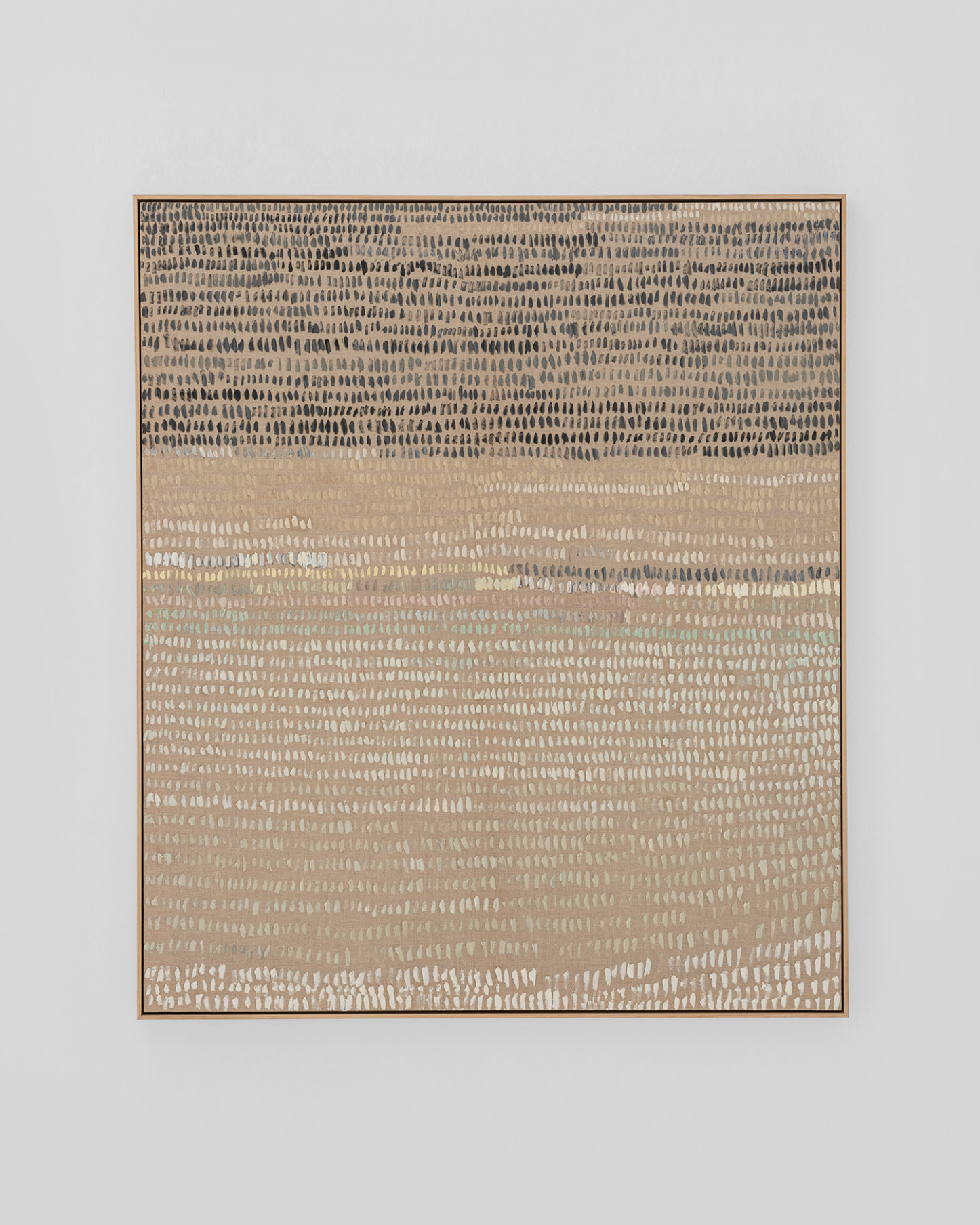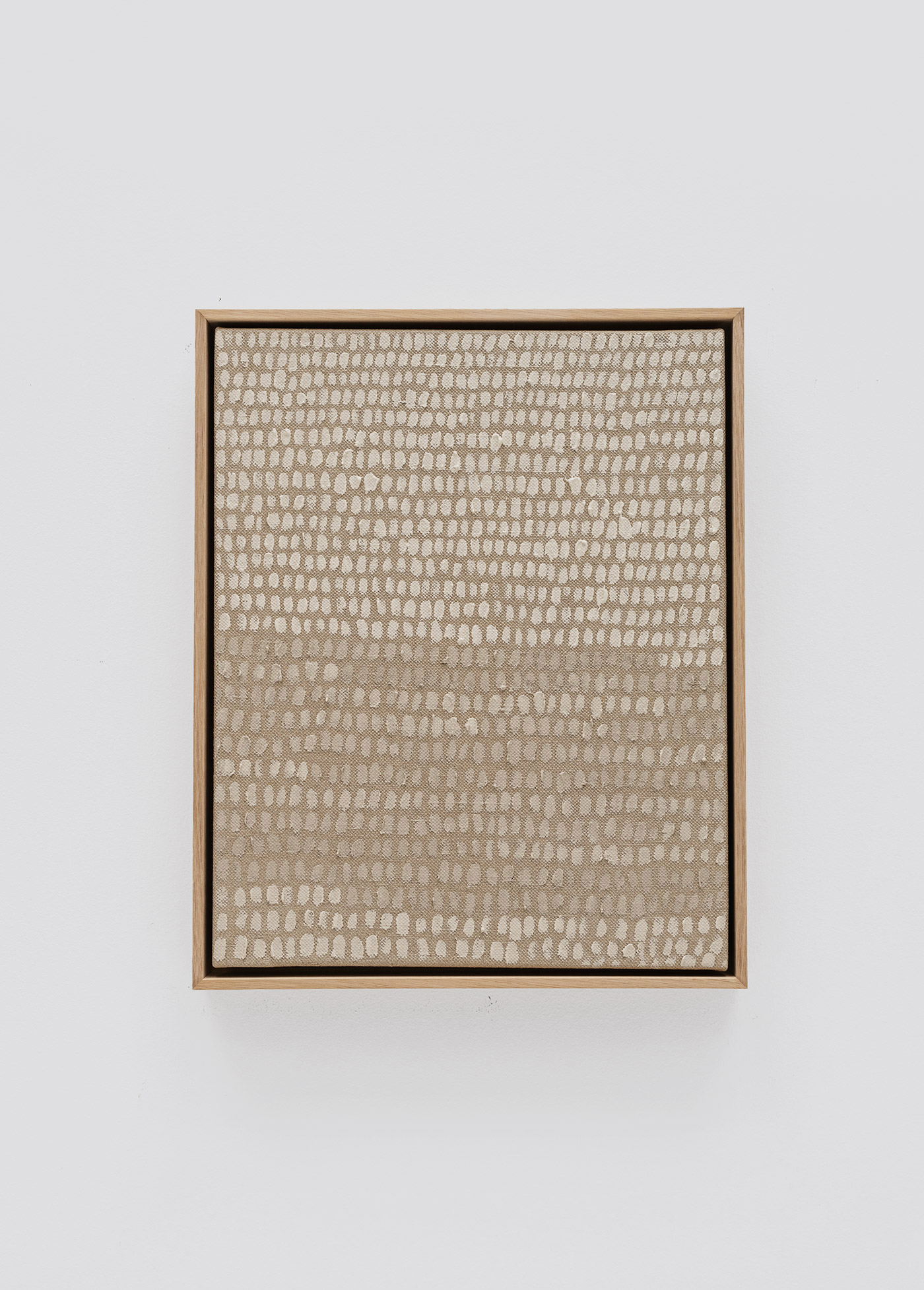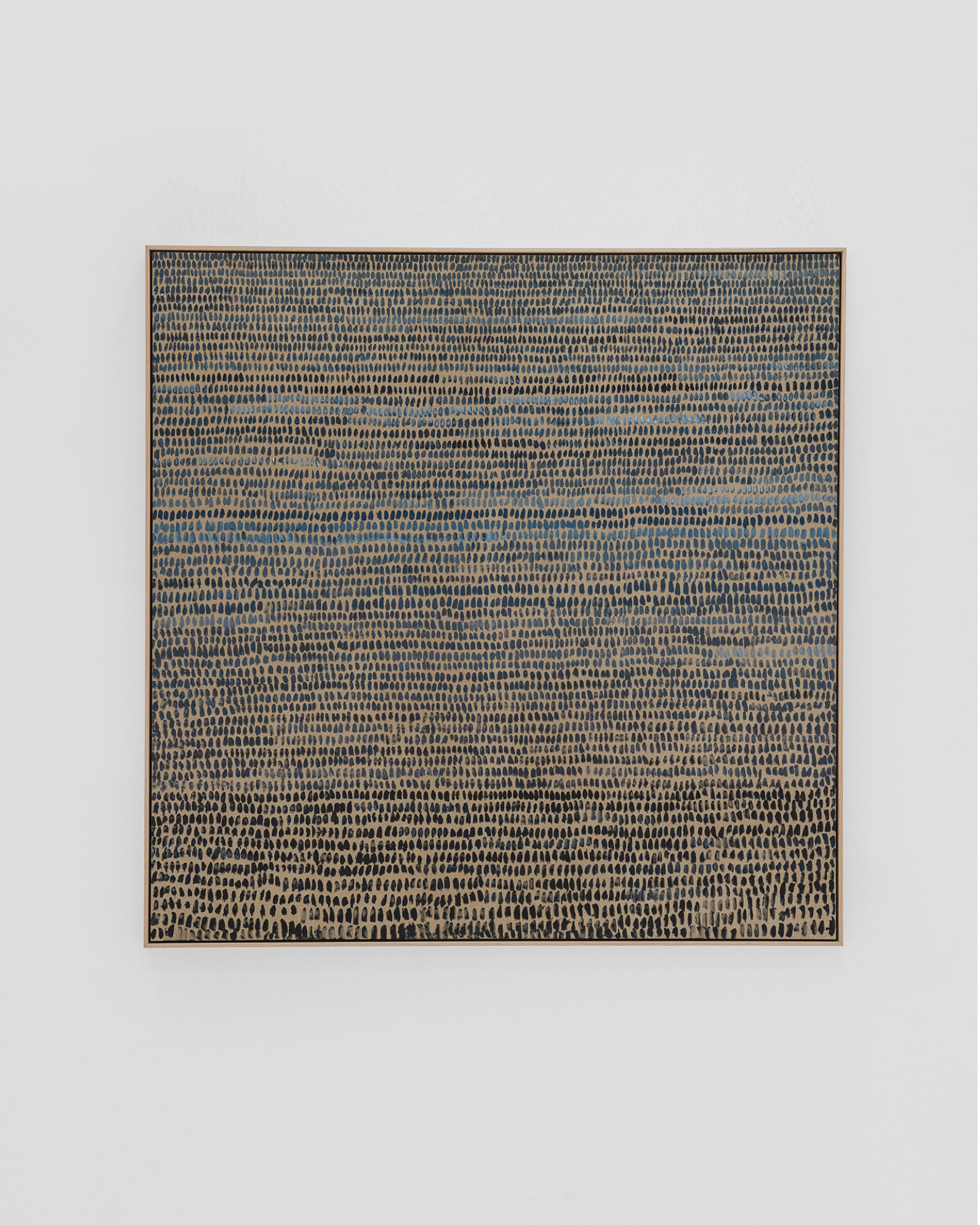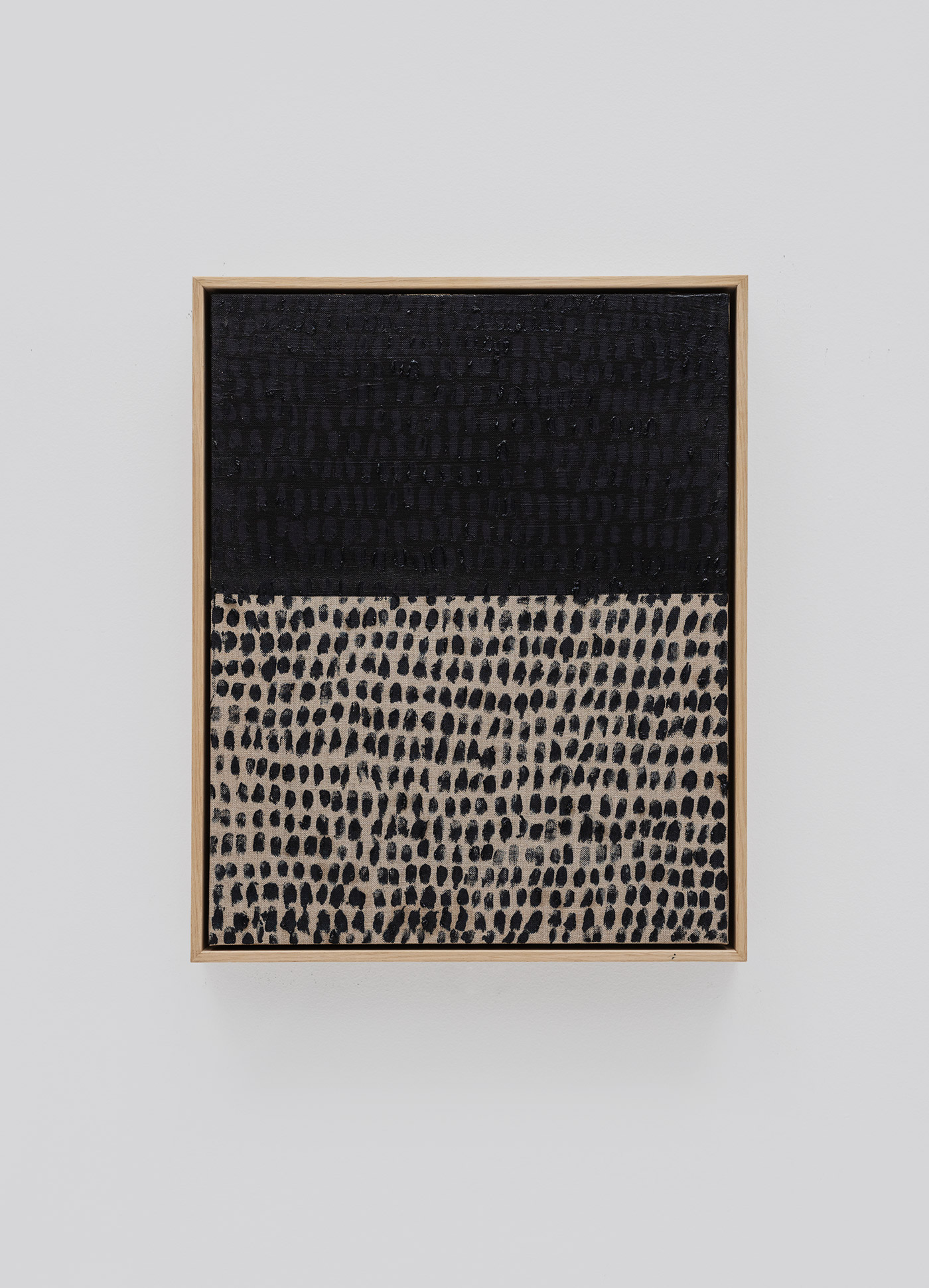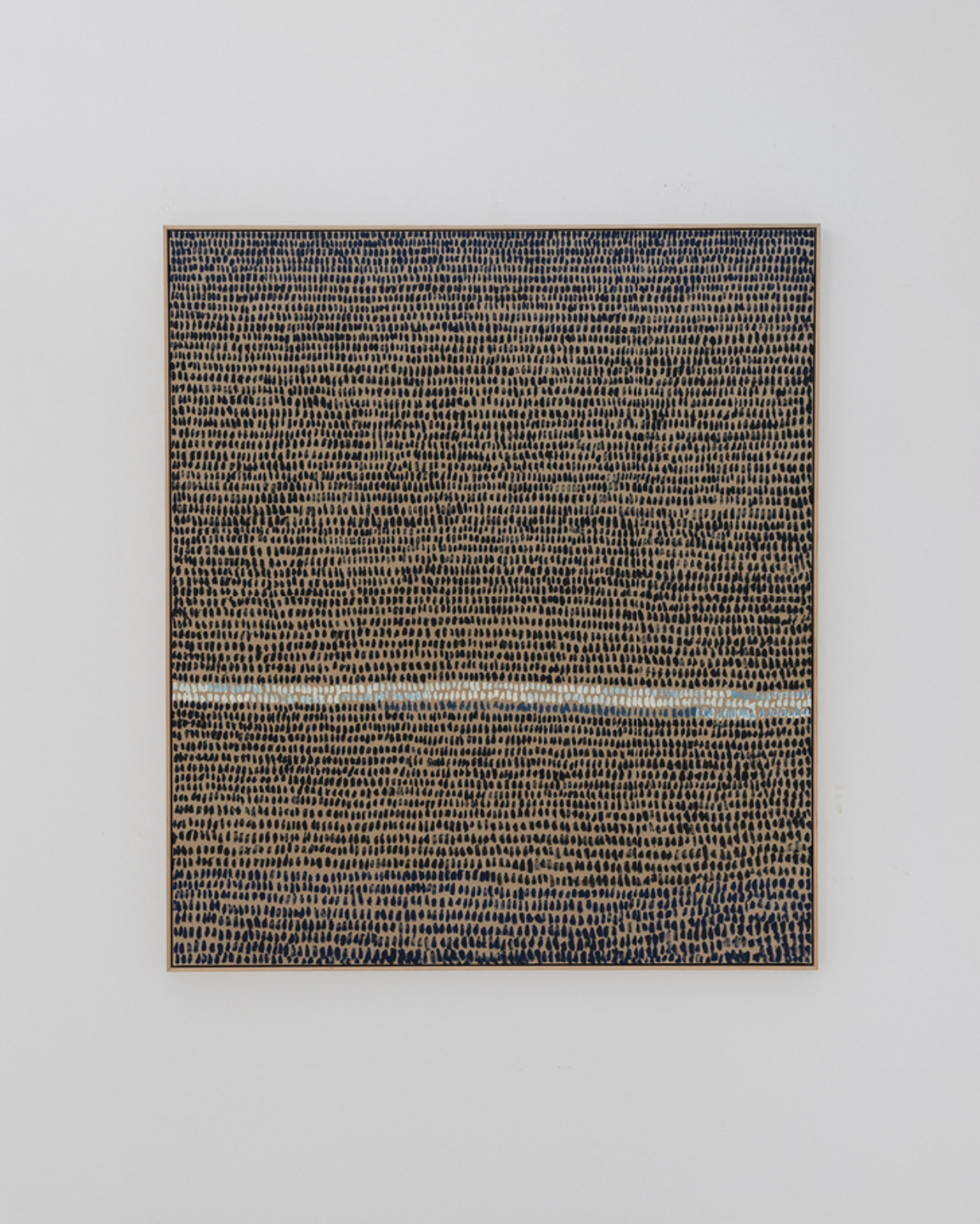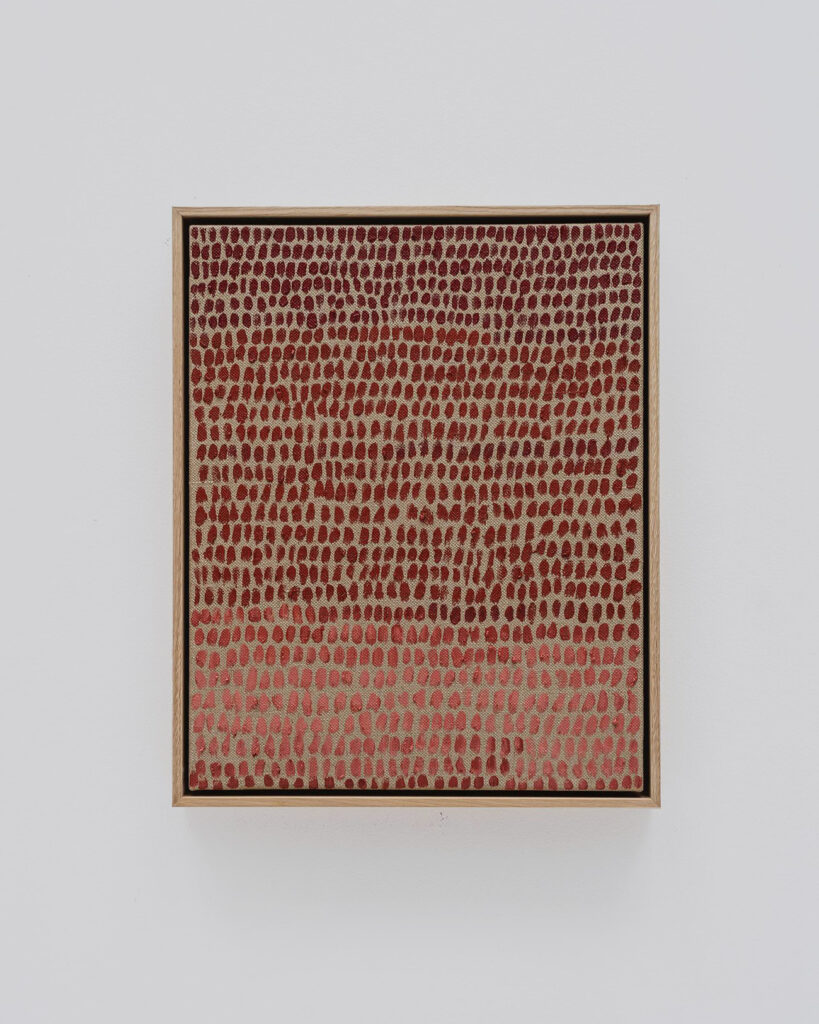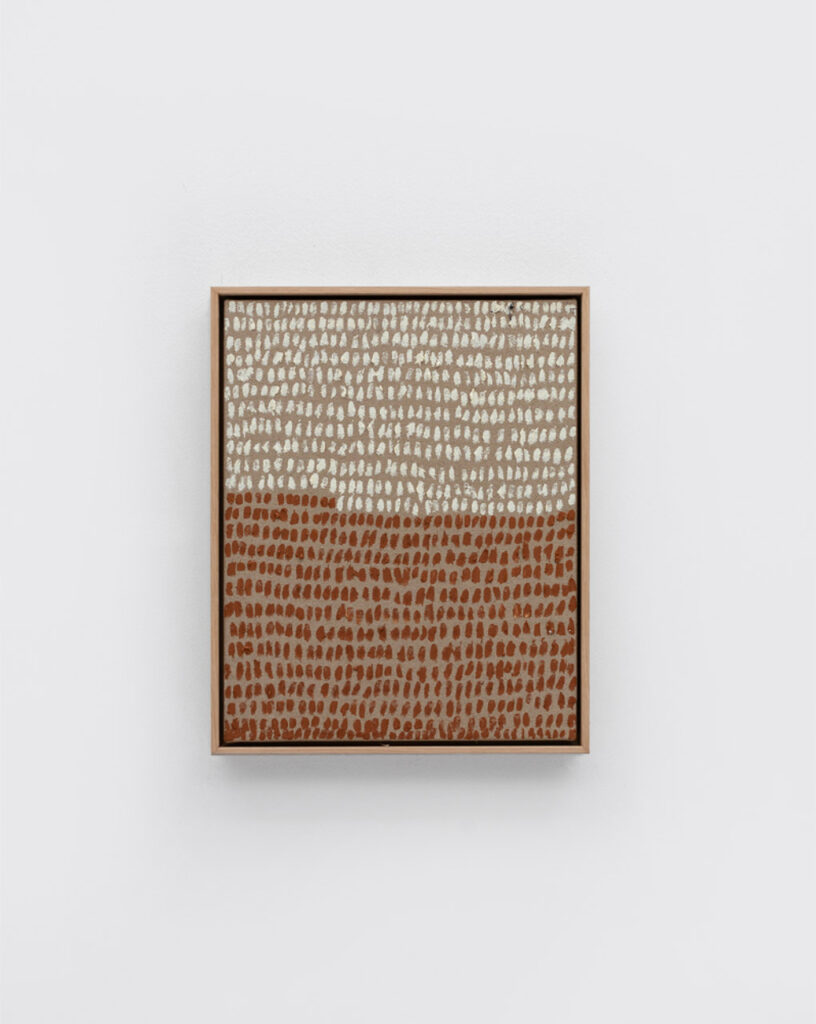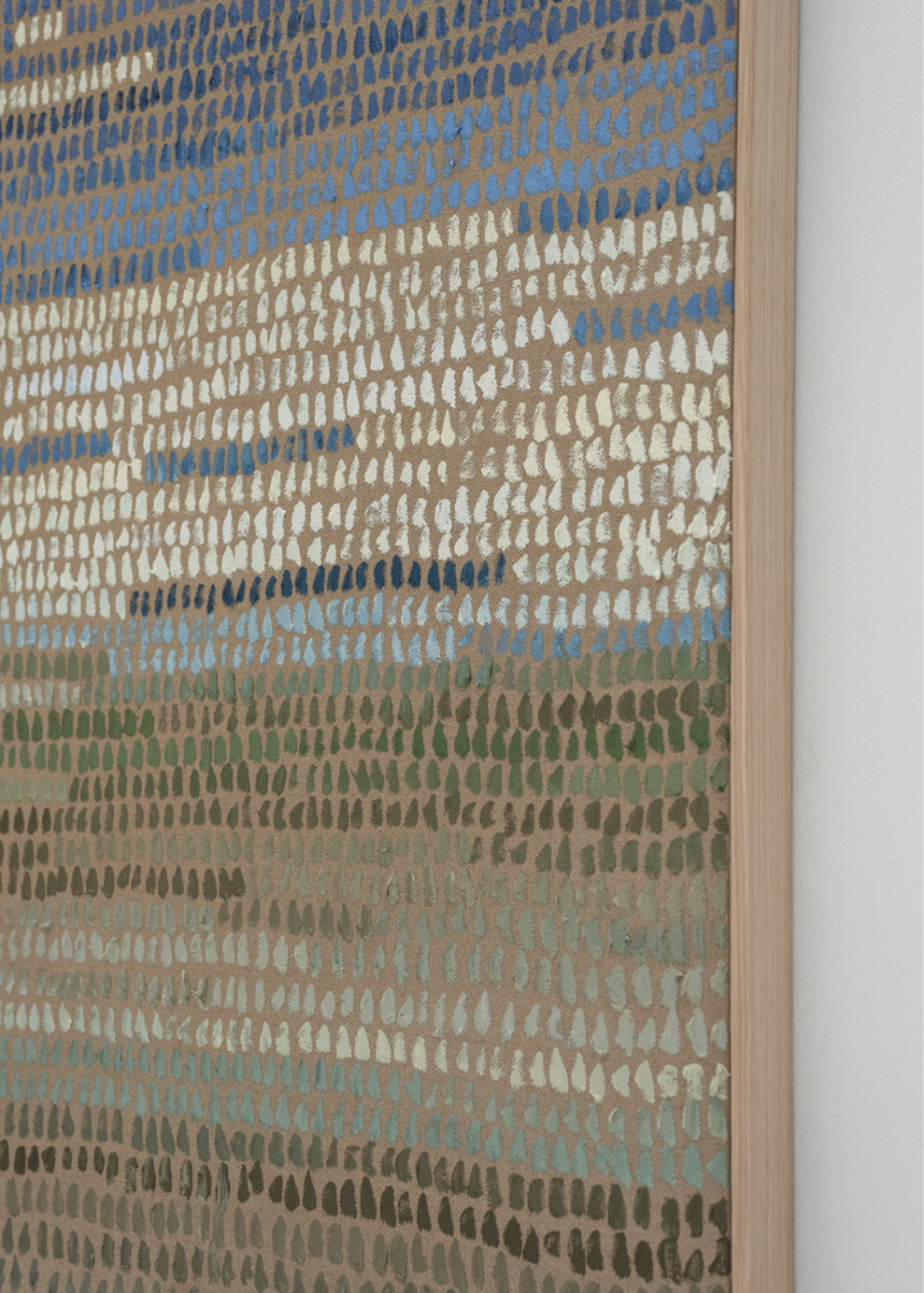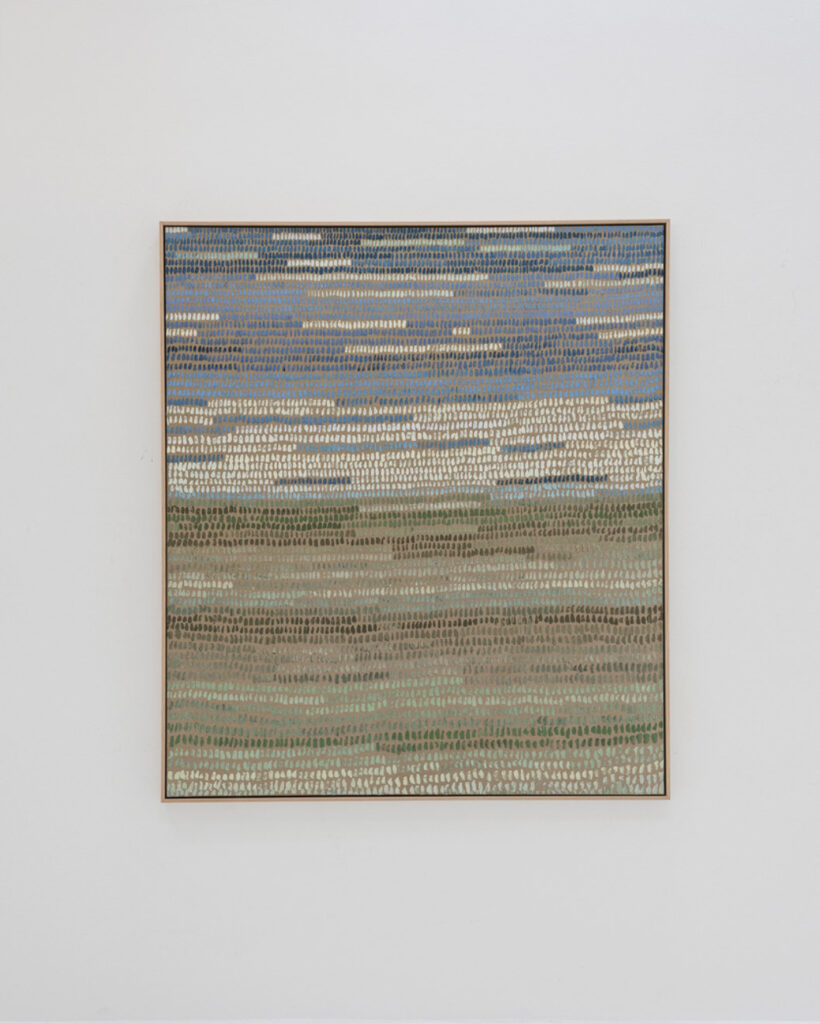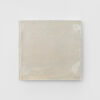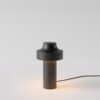In the latest edition of our interview series, we once again dive into the world of minimalist aesthetics. In inspiring conversations with creative minds from the fields of architecture, design, and art, we explore how they are guided by their vision and how they express it in their works. Along the way, they provide us with interesting insights into their creative process and reveal how they perceive and shape the world. This time, I had the pleasure of having an inspiring conversation with Maria Yelletisch.
Maria Yelletisch (b. 1987) is a Spanish artist whose works explore the complexity and beauty of nature. Her art is characterized by meditative repetition and a profound exploration of memories and emotions. Maria’s works are an invitation to tranquility and reflection, a visual journey through repeated patterns and landscapes. In this interview, we talked about Maria’s artistic development, what influences her art and got a fascinating insight into her creative process.
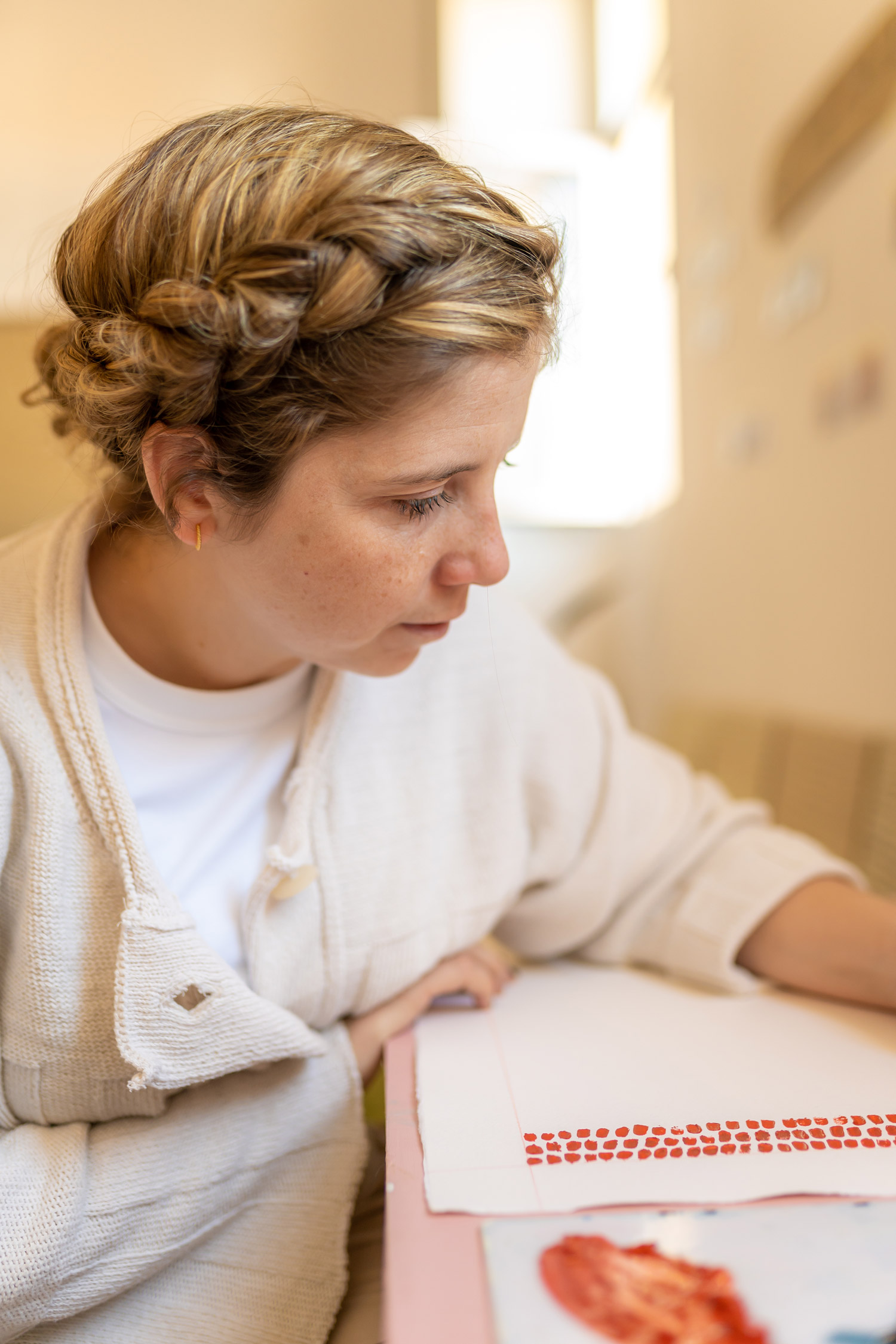
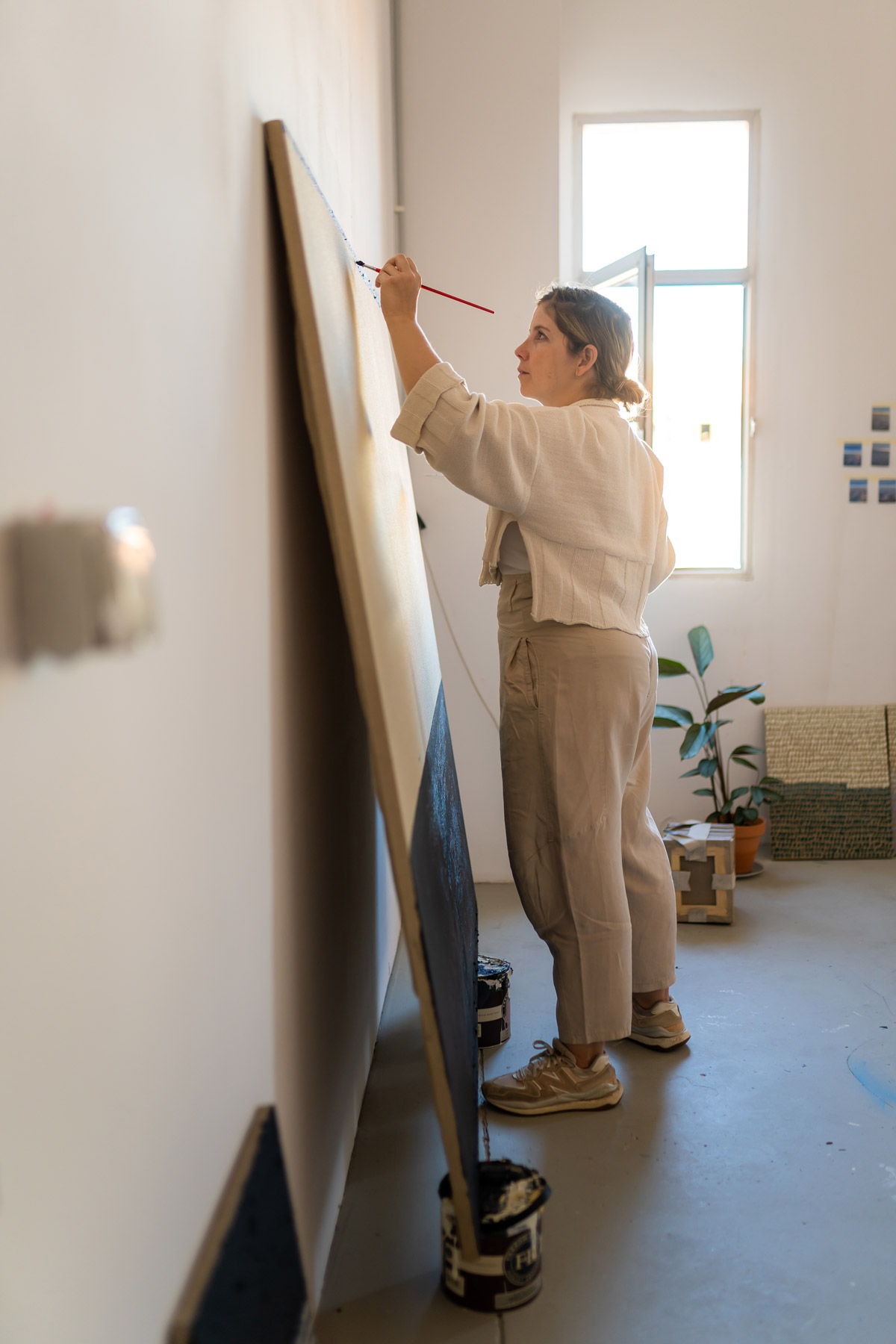
Maria, thank you so much for your time! Please tell us, how would you describe your work to someone who has never seen it?
I specialize in oil painting, with occasional forays into watercolor and acrylic mediums. My focus within the artistic domain is on capturing the essence of landscapes, exploring the beauty that nature offers. I have a keen interest in the interplay of repetition, finding patterns in the world around us and incorporating them into my pieces.
Additionally, my art is deeply rooted in evoking emotions and creating a connection between the viewer and the artwork. It’s a journey of exploration, using various techniques and mediums to convey the intricate dance between landscapes, repetition, and the emotions they elicit.
How has your artistic style evolved over time? Where does your interest in repetition stem from?
I believe my artistic style has evolved towards more orderly compositions, although the theme of repetition has always been present in my work. Looking back at drawings and paintings from my university days and even my childhood, I can recognize recurring patterns. Repetition, to me, is a pervasive element in our lives – from the rhythmic act of breathing and walking to the intricate patterns found in nature.
I view repetition not only as an artistic motif but also as a fundamental aspect of learning and understanding. Just as we repeat actions to internalize them, repetition becomes a means of integrating elements into our behavior. It’s a universal concept; we are all immersed in constant repetition, whether consciously or subconsciously. This perspective has influenced my art, guiding me towards a more ordered expression of these repetitive elements, as I explore the profound connections between art, life, and the inherent patterns that shape our existence.
I view repetition not only as an artistic motif but also as a fundamental aspect of learning and understanding.
You also studied Art Therapy alongside art. That must have been an interesting and exciting study. Can you tell us a bit about it?
Yes, studying Art Therapy alongside art has indeed been a fascinating and enriching experience. Art Therapy is a field that harnesses the power of creativity and self-expression as a therapeutic tool. In essence, it involves using art-making processes to help individuals explore and understand their emotions, improve self-esteem, and navigate personal challenges.
For me, Art Therapy reaches where language sometimes falls short. While you can express that you are sad verbally, there are countless ways to experience sadness. I believe that through artistic mediums, one can articulate and communicate feelings in ways that words alone might struggle to capture. The artistic process becomes a powerful tool for expressing the nuanced and complex dimensions of emotions that may be challenging to convey verbally.
How does the knowledge from your studies influence your art?
During my Fine Arts degree, there was a significant emphasis on the conceptual aspect of art, which, for me, became overwhelming and led to a rejection of the act of painting. By the end of my degree, I had completely lost the desire to express myself through art. It was only when I pursued my Master’s in Art Therapy that I underwent a profound transformation.
This therapeutic approach allowed me to reconnect with what I genuinely consider to be art. Here, I found the space to reconcile with painting and drawing, rediscovering the intrinsic joy of artistic creation and overcoming the conceptual barriers that had affected my relationship with art. Now, my artistic practice is enriched by both emotional expression and technical mastery, providing me with a more fulfilling and holistic experience in the world of art.
Nature is an inexhaustible source of inspiration for you. Are there certain landscapes or places that have a special significance in your work?
Absolutely, nature is deeply intertwined with my artistic work. I am constantly on a quest to explore new landscapes that ignite my inspiration. However, there are certain places that hold a special, recurring significance for me. My cabin in Asturias and my father’s home on the Costa Brava are two environments that particularly resonate with my creative process.
Moreover, I consider these places my safe havens. The Costa Brava, a landscape I have known since birth, provides a sense of security and comfort. Similarly, my cabin in Asturias, a haven for the past seven years, has become a safe and welcoming space. Safe places are where I feel embraced by the surroundings, allowing me to relax, meditate, and draw inspiration from the tranquility and familiarity that these environments offer.
You mentioned that repetition connects you directly to meditation. Tell us more about your creative process and this meditative aspect of repetition.
For me, the act of repeating patterns or elements in my art is not just an aesthetic choice but a deliberate and meditative practice. Engaging in repetitive motions while creating allows me to enter a state of flow, where I lose track of time and immerse myself fully in the artistic process. This meditative aspect provides a sense of calm and introspection, akin to the focus achieved during meditation.
Each stroke or repeated element becomes a form of rhythmic meditation, fostering a profound connection between my mind, the artwork, and the emotions embedded within it. It’s a therapeutic journey that allows me to explore the intricacies of my thoughts and emotions, creating a visual manifestation of the meditative experience.
In essence, repetition serves as a pathway to meditation within my creative process, offering not only a visual language but also a spiritual and contemplative dimension to my artistic expression.
Each stroke or repeated element becomes a form of rhythmic meditation, fostering a profound connection between my mind, the artwork, and the emotions embedded within it.
What do you hope viewers take away from your art? Is there a certain feeling you want to evoke when looking at your paintings?
What I aim for in my art is to evoke a sense of peace and beauty. My intention is for people to find solace and appreciation for the beauty that surrounds us, as well as to connect with the emotional resonance within the artwork.
As Agnes Martin noted, our emotional life is really dominant over our intellectual life, but we do not realize it.
Many artists find it difficult to use the term “minimalist” in relation to their work. How about you? Would you describe your work as minimalist? And how do you feel when someone says your work is minimalist?
I love minimalist artists and their ability to create powerful works with surprising simplicity. However, regarding my own painting, I feel it hasn’t reached that point yet, and I’m not sure if it ever will. I believe that for my works to be truly minimalist, they would need to have far fewer elements or visual information.
And finally: What are you currently working on and what are your plans for the future? Are there any subjects that you would like to explore further?
At the moment, I’m actively preparing for an upcoming exhibition in Copenhagen in March, followed by another one in Barcelona scheduled for November. Additionally, I’m excited to share that I have a forthcoming artistic residency in July, situated in the Costa Brava.
Thank you so much for your insights, Maria!
More about Maria Yelletisch
https://mariayelletisch.com/
https://www.instagram.com/mariayelletisch/
Aesence Feature: Maria Yelletisch – Finding Peace In Repetition
Maria Yelletisch is represented by:
Alzueta Gallery https://www.alzuetagallery.com/artists/maria-yelletisch-2/
